9 hours
Daily Tour
12 people
English, Espanol, French, German, Italian
A Trip to Luxor is essential for any Egypt itinerary and is a fascinating experience, even if you are not an archaeologist or a massive Egyptology nerd . Luxor City was the capital of ancient Egypt for over 1500 years, and its temples holds significant history.
WithLuxortt Travel Services you will enjoy a personalized Luxor experience when you book your Luxor Day Tour with us.
On the West Bank you’ll see the Valley of the Kings, Temple of Hatshepsut, and Colossi of Memnon, then cross the Nile to visit Karnak and Luxor temples.
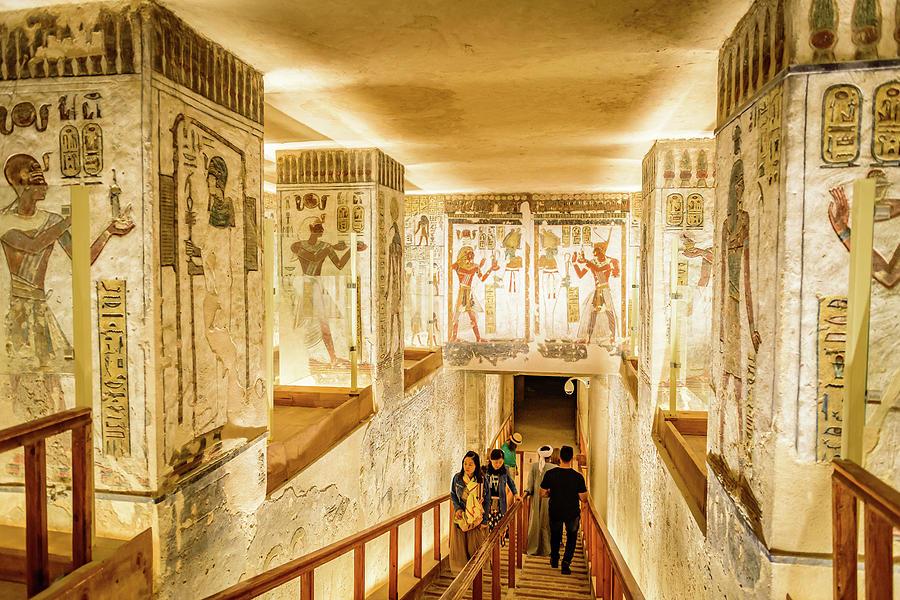
The Valley of the Kings is located on the west bank of the Nile River near Luxor. It is the most famous site for having unique collections of tombs and breathtaking ancient ruins. That location makes it one of the hottest spots for exploring ancient Egyptian history. The richness of the findings here in the Valley of the Kings has kept archeologists busy for nearly two centuries.
the Valley of the Kings was used for royal burials for the Kings, their families, and their possessions. In 1979, it became a World Heritage Site, as well as the rest of the Theban Necropolis.
Discovered by Howards Carter in an excavation expedition in 1922, one of the most important tombs found in the Valley of the Kings is the tomb of Pharaoh Tutankhamun and all of his treasures. This discovery has ever since then attracted tourists from all over the world as the treasures found traveled the world on a tour to spread the news that this very important discovery for the history of our civilization was discovered in the Valley of the kings. To this day excavations are still in process in some areas of the Valley of the Kings and a rotation system is in place for visitors to visit the tombs as restoration procedures are in place to recover the tombs that were found.
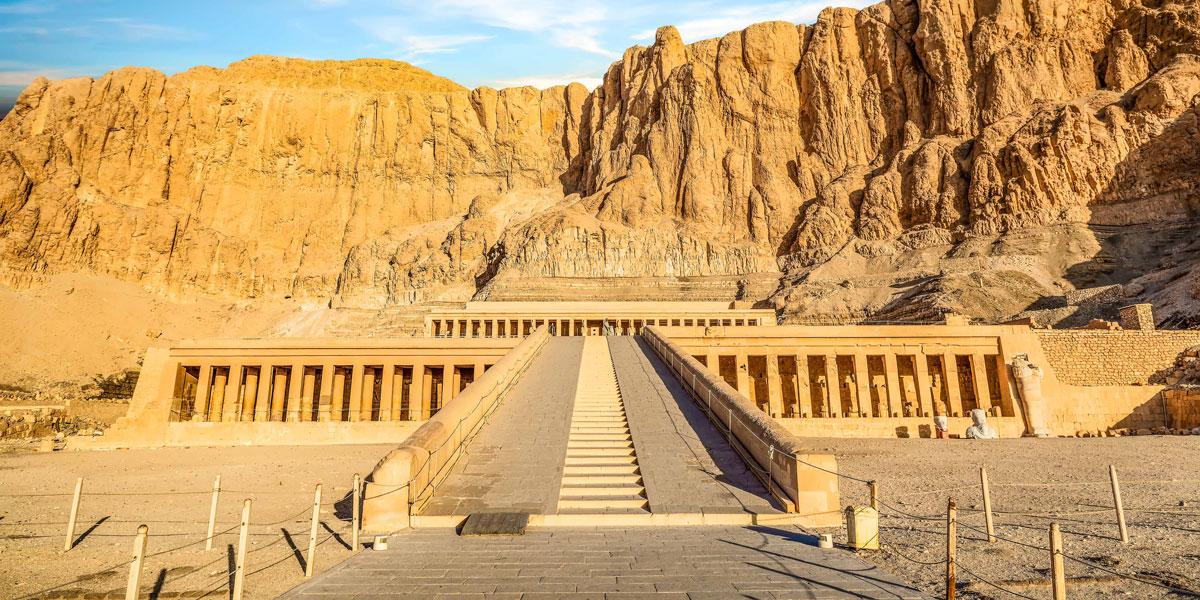
Tucked into the cliffs of Deir El Bahari, the Mortuary Temple of Hatshepsut is one of Luxor’s most striking sights.
As one of the most impressive feats of ancient architecture, the temple represents the legacy of one of Egypt's most prolific rulers and one of the world’s most influential early female leaders.
When you stand before Hatshepsut’s Mortuary Temple, you might agree that, from a distance, it appears to be a minimalist’s dream.
The clean lines and monotone construction seem almost miles ahead of its time. But, as you approach, the massive sandstone sculptures emerge, and the temple’s ancient history quickly comes to life.
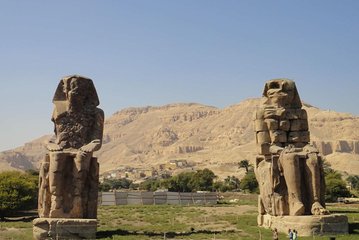
The Colossi of Memnon is located in the West Bank of Luxor, Egypt. The Colossi of Memnon gained its popularity due to its majestic appearance and for the mysterious sounds emitted by the northern colossus statue at every sunrise.
Two magnificent twin statues image of pharaoh Amenhotep III and two smaller statues carved by his feet (one being his wife and the other his mother), stands graciously in the horizon of the magnificent Luxor horizons.
The two statues, each measuring 60 feet tall, stands in the entrance of Amenhotep III’s mortuary temple. They are famously named by the name of Colossi of Memnon due to a phenomenon produced by one of the statues after an earthquake.
Memnon’s name whose means the steadfast or resolute, was the son of Eos, known for being the goddess of dawn. Memnon was associated with the Colossi many years after its construction due to the cry at dawn of the northern statue also known as the “Vocal Memnon.” Memnon’s eventually became known as the “Ruler of the West.”
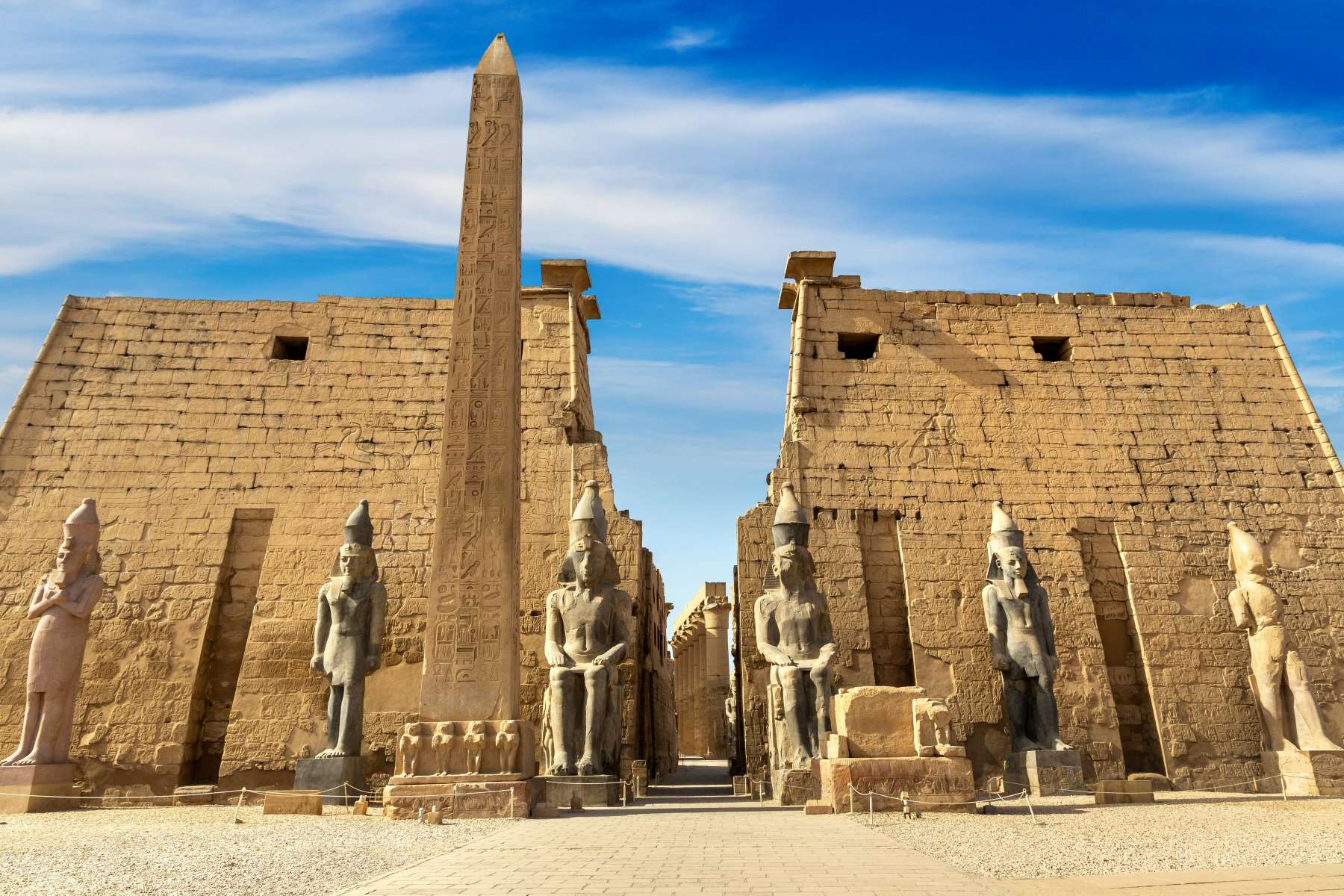
Luxor Temple is one of Egypt’s most fascinating attractions, it’s steeped in history and has been well-preserved, with almost all of it still intact. Luxor Temple is located in the historic city of Luxor, which is the modern name of the ancient Thebes.
The temple is known as Ipet Resyt in the Egyptian language, which means “The Southern Sanctuary.”
Luxor Temple played an important role during the annual Opet festivals, where Amun, Khonsu, and Mut statues were moved from Karnak along the Avenue of Sphinxes.
Some pharaohs used the temple of Luxor as a burial site for the royals as they believed it was home to Amun.
Each section of the temple served a different purpose, like being a coronation area for Pharaohs or a shrine for Amun.
Only two of the original six giant statues of Ramesses II remain at the temple.
The temple of Luxor is one of the best-preserved of all of the ancient monuments containing large amounts of structure, statuary and relief carvings that are still intact to this day, making it one of the most impressive places to visit in the Luxor area and all of Egypt.
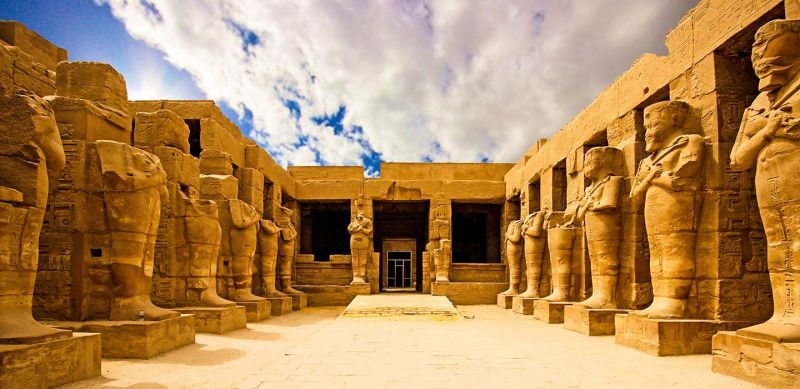
Egypt’s Karnak Temple is an imposing display of ancient Egyptian artistry and architecture. Get ready to delve into this fantastic destination that is sure to blow your mind. Luxor is one of Egypt’s most precious inheritances when it comes to Egyptian ancient civilization. With a vast number of incredible ancient monuments, one of Luxor’s great temples is the Karnak Temple. The Karnak Temple Complex consists of a number of temples, chapels, and other buildings in the form of a village, and is for that reason that the name Karnak was given to this complex as in Arabic Karnak means ‘fortified village’.
● Karnak is an open-air museum. It is considered to be the largest religious building or site in the world.
● The 54,000 square feet Great Hypostyle Hall in the Karnak Temple is large enough to fit the Cathedral of Notre Dame comfortably.
● Over eighty thousand servants and slaves were assigned the task of serving Amon-Ra in Karnak, showing his power and importance at the time, also 5,000 statues were erected in his honor.